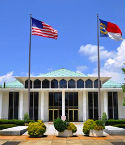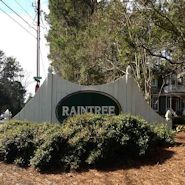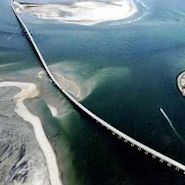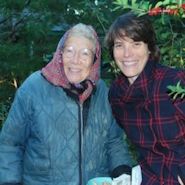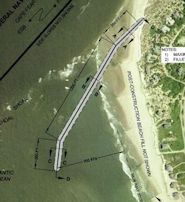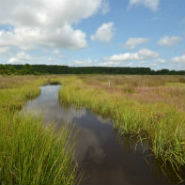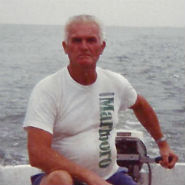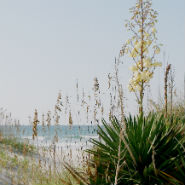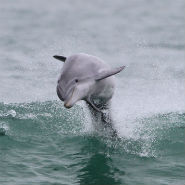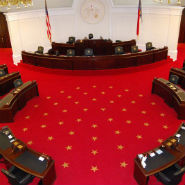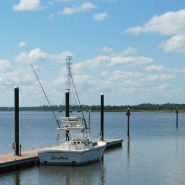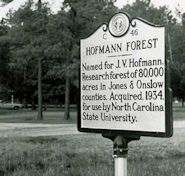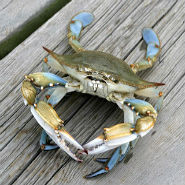In what has become an annual rite, the N.C. General Assembly Friday passed more regulatory changes that weaken environmental protections. Small pockets of coastal wetlands were in the crosshairs this time.
Archives
Neighborhood Gets a Runoff Refit
Some driveways have been repaved and other steps will be taken to reduce polluted runoff in Raintree, an existing housing subdivision in Wilmington.
A Bridge Over Muddled Waters
The latest court decision involving the Bonner Bridge over Oregon Inlet has both sides claiming victory.
Miss Blanche of Ocracoke
Blanche Howard Jolliff is 94 and an island treasure. She remembers, for instance, the shipwreck that led to the first road on Ocracoke and the first road collision.
Community Farm Takes Root in Carteret
The N.C. Coastal Federation’s EarthWise farm started with a seed — first planted in the imagination of an old man and then in the soil by his children.
Pelican Award: Allen Propst
A Realtor and occasional developer first raised the alarm about possible illegal ditching of wetlands in Pamlico County.
Now You See It… Now You Don’t
Some controversial coastal provisions that were included in earlier versions didn’t make it into the final state budget that Gov. Pat McCrory signed yesterday.
Bald Head Seeks Permit for Terminal Groin
Bald Head Island could become the first N.C. community to build a terminal groin since lawmakers reversed the ban on such structures. First, they must clear a number of hurdles.
Restored Coastal Marshes Fight Climate Change
That’s what researchers found at the N.C. Coastal Federation’s wetland restoration project in Carteret County. It’s all about the blue carbon. But what is blue carbon?
Honoring the Last “Old Salt” of Ocracoke
Maurice Ballance, a waterman and musician who died recently, will be remembered with love and respect. He is considered the last of a generation of Ocracoke men who were true “old salts.”
More Room for Memories at Hammocks Beach
Find out what makes the state park our naturalist Sam Bland’s favorite place and why he’s glad it’s getting bigger.
2014 Pelican Award Winners
A fisherman, a realtor and a former senator are among the 15 recipients of this year’s awards, which honor exemplary efforts to preserve and protect the coastal environment.
An End of Session Twist
The Senate came short of passing an omnibus bill, including several controversial environmental provisions, previously seen and rejected by the House.
Marina to CRC: Help Our Boats Get Wet
Boats launching from a Wilmington marina can only access the Cape Fear River at high tide. Marina owners turn to the Coastal Resources Commission today in hopes of a solution.
Hofmann Forest in Hands of the Court
With the original sale date passed, the state court system will likely decide the fate of the 79,000-acre forest in Onslow and Jones counties.
Our Coast’s Food: Chicken-Necking
A good crab boil starts with a chicken-necker. That’s someone who uses a dip net, a piece of string, a fishing weight and a chicken neck to catch blue crabs. We tell you how.

